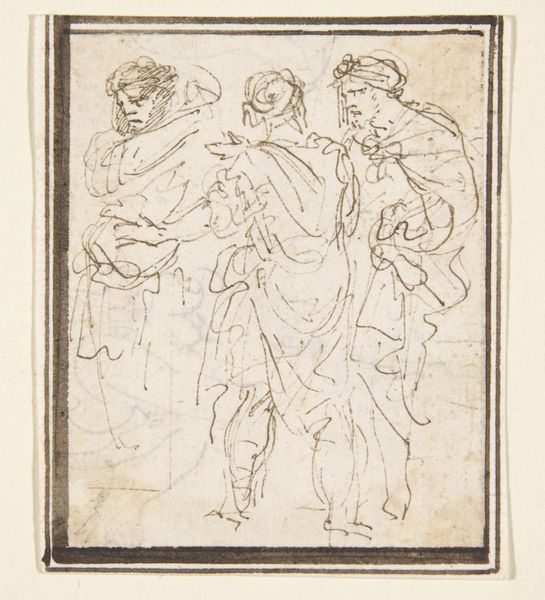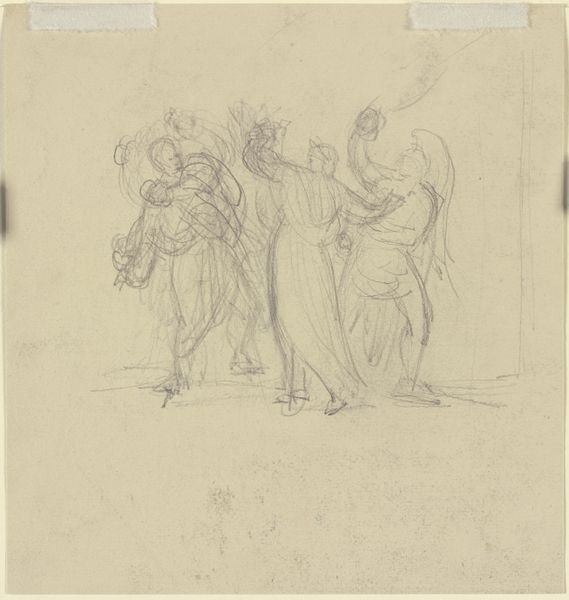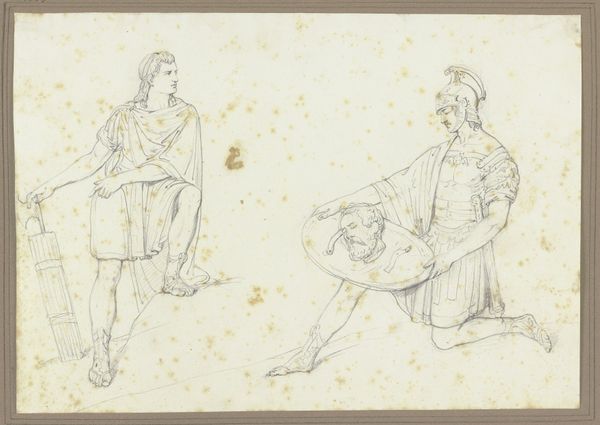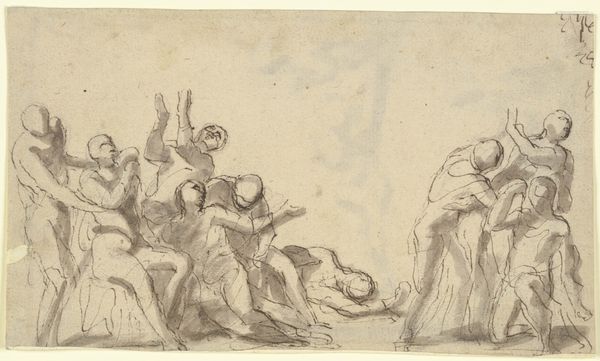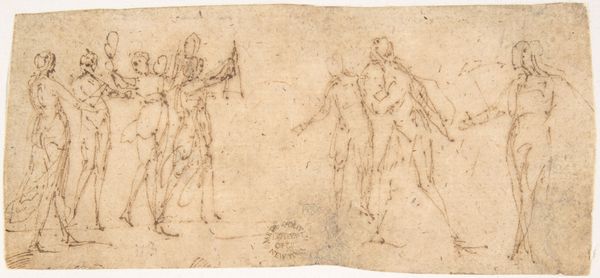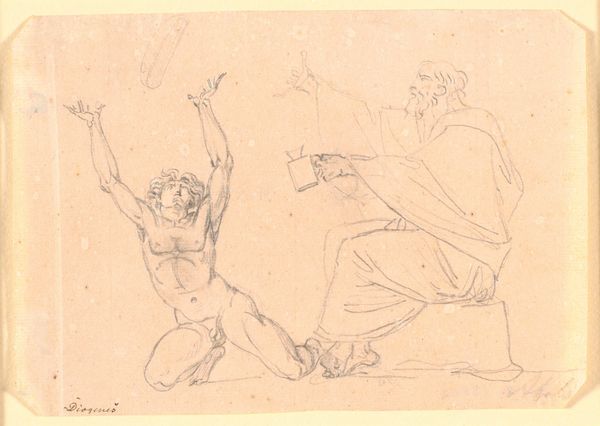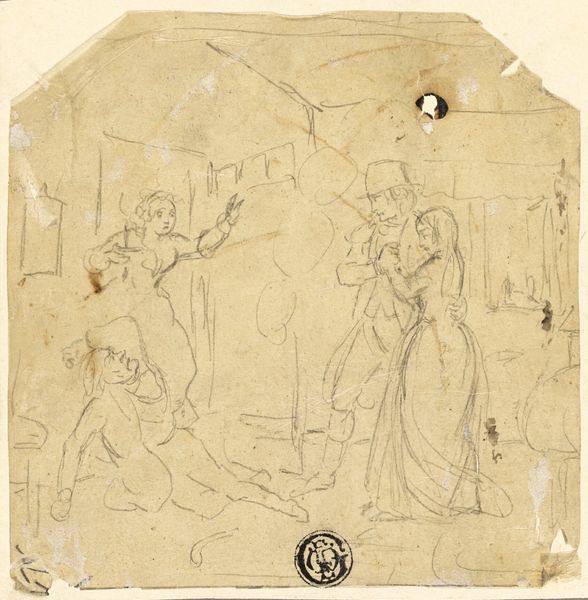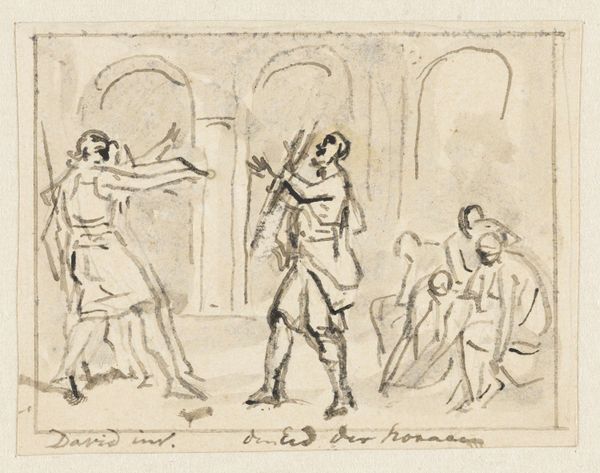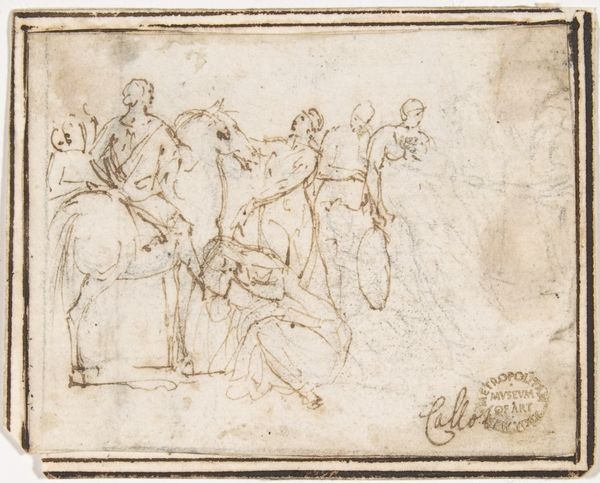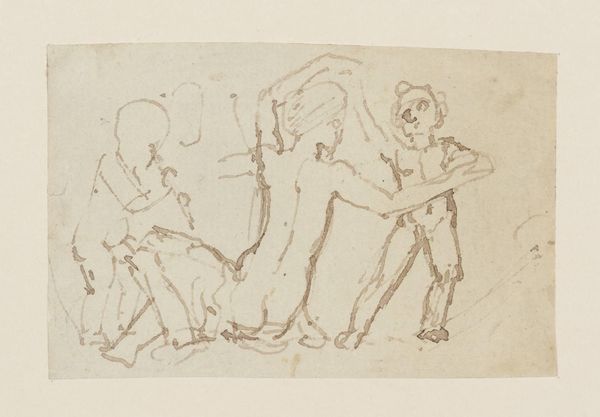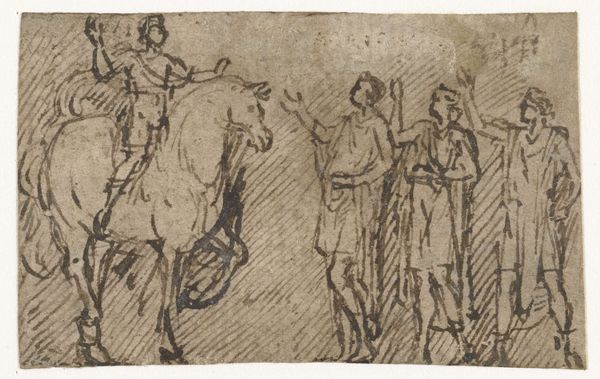
drawing, print, paper, graphite
#
portrait
#
drawing
# print
#
figuration
#
paper
#
line
#
graphite
#
genre-painting
#
realism
Dimensions: 75 × 109 mm
Copyright: Public Domain
Editor: We're looking at "Two Workmen," a drawing by William Henry Pyne. The exact date is unknown. It's graphite on paper, and what strikes me most is how raw and immediate it feels. The figures are caught in the act of labor. What's your perspective on this drawing? Curator: The immediacy you observe stems directly from the material conditions of its creation. This is not high art meant for the salon, but a study, a record of labor. Consider the medium—graphite, readily available, easily worked. Paper, similarly, is a practical surface for quick notation. What kind of labor do you think they are performing? And what do the objects on the bottom-right of the piece suggest about that labor? Editor: They seem to be hoisting something, maybe raising a post? Those could be… bricks, perhaps? The figures themselves appear functional, not idealized. Curator: Exactly. Their poses show exertion, reflecting the physical demands of the job. The lines aren't polished; they emphasize the actions and interactions inherent in their collaborative material process. Note the simplification of form. Pyne is not interested in individual detail, but more the overall gesture. Consider how this focus differs from, say, academic paintings of the same period that portray grand historical events or allegorical subjects, instead this depicts a very grounded reality. Does it prompt you to consider any related art or artists? Editor: It reminds me a bit of Courbet, or Millet—artists interested in portraying everyday life, even if this sketch feels a world apart from painting. But seeing labor represented feels revolutionary in a way. Curator: Absolutely. And understanding how readily available and relatively inexpensive materials made it possible for more artists to consider and portray their environments reveals how socioeconomic factors contributed to changing artistic styles and subjects. This piece urges us to investigate the system of making, distribution, and display—and how artistic merit gets defined in turn. Editor: I see the art differently now; looking past the subject of art to understand the object as work and a product of labor. Curator: Indeed, seeing it as a manifestation of choices tied directly to material constraints and social context adds layers to our understanding.
Comments
No comments
Be the first to comment and join the conversation on the ultimate creative platform.
